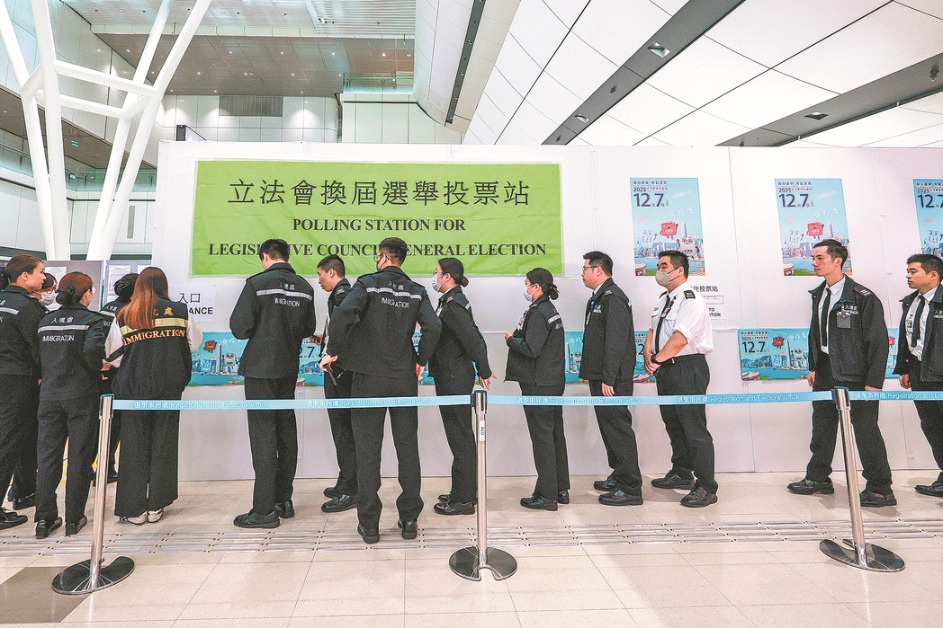Lessons developed on need to build characters
By Li Yang | China Daily | Updated: 2018-08-17 11:13
In the region, the Japanese have done a good job in protecting characters, which their ancestors borrowed from China and merged into their own language.
The growing Westernization of Japan has only heightened the status of characters used in Japanese society and culture.
Using characters is considered a serious means of expression. Most leading schools in Japan make a strong ability in writing characters an important enrollment requirement.
A recent survey by the Ministry of Education, Culture, Sports, Science and Technology of Japan found that just over 72 percent of Japanese think characters are important and indispensable components of the Japanese language. Just over 52 percent said they attach great importance to writing characters, despite the advent of computers.
In the keyboard era, most Chinese rely on pinyin, or the alphabetic pronunciation of the characters, to input Chinese characters into computers or mobile phones. The software will conveniently choose the right characters according to the context or word frequency, as there are dozens of characters with the same pronunciation in Chinese.
For instance, it takes 46 strokes to complete the three characters lai ha ma, or "toad", in Chinese. But the seven letters in pinyin are sufficient to type the three characters on a computer. They are learned in elementary school, but most adults can no longer write such characters.
Education is another problem. In college, most homework and papers are printed out, instead of handwritten. And few teachers use chalk and blackboards, with Microsoft's Powerpoint the most-often used software to convey knowledge and information to students.
The number of electronic devices in the classroom is thought to be another reason why students are easily satisfied with just a smattering of knowledge of the Chinese language and characters.
Wu Kefen, a veteran Chinese-language teacher at an elementary school in Jinghai, Tianjin, said it is quicker to look up a character in an electronic dictionary, but traditional printed dictionaries offer more-detailed information on the usage and meaning of the characters. Students pay more attention to remembering a character's pronunciation, but not the other knowledge related to it, which e-dictionaries rarely provide.
"Using the traditional printed dictionary is a good habit. It is a process of discovering questions, looking things up, understanding, remembering and application. This leaves a deeper impression," Wu said.
Another worry is the "pollution" of Chinese characters by internet language. Young people regard using internet language as cool and fashionable. After they learn to use these expressions, they automatically include them in their writing.
Abolition suggested
Many think Chinese characters are hard to learn and have a limited use, which restricts Chinese people's thinking. Some even see the characters as "stumbling blocks" or burdens to China's globalization and development.
Wang Yongmin, a member of the expert committee at the National Museum of Chinese Writing, said: "This is a point of view shaped under the influence of Western culture. It is regretful that this argument lingers today after this line of thinking emerged in the late Qing Dynasty (1644-1911) when China's door was forced open by the gunboats and cannons of Western powers."
At the time, some scholars attributed the fall of the Qing empire to Chinese culture, language and characters, and called for the Chinese characters to be turned into the Roman, or Latin, alphabet. Some also advocated abolishing the characters or the Chinese language, and embracing wholesale Westernization.
The late linguist Zhou Youguang, known as the "Father of Pinyin" for his important work on the pinyin system, believed the Chinese language would finally be presented as letters.
He thought all the written characters in the world should follow three development phases: from hieroglyphic to ideographic and finally phonographic characters, describing this as a "universal law".
Wang said any language and its characters match a people's historical culture, customs and cultural psychology, and are "national cultural genes". He believes there is no superiority or inferiority among different languages and characters.
Zhou's critics said those who insisted on the alphabetization of Chinese characters under the guise of promoting linguistic progress were disowning Chinese culture.
It is a reasonable fear that if Chinese characters were alphabetized, Chinese people would lose their traditional culture, along with an entire set of protocols for the nationally unified character system. This is because given the dramatic differences in pronunciation in different dialects nationwide, alphabetized Chinese could cause cultural divisions.
Beauty and vitality
There are more than 90,000 Chinese characters, with 7,000 used frequently. A middle school graduate is required to know about 3,500 characters, which is basically sufficient for daily use.
Wang said Chinese characters have been expressions of and witnesses to Chinese culture over thousands of years. But the recent trend of shunning them, if left unchecked, will probably threaten national security and unification.
The characters are a record of Chinese civilization and its roots.
They have been used for about 5,000 years, ensuring the integrity and consistency of the Chinese language, an important reason why Chinese civilization has outlived those of ancient Egypt, Babylon and India. And the deaths of these ancient civilizations were accompanied by the demise of languages used in them at the time.
It is not difficult for Chinese who complete middle school education to understand the meaning of poems and prose written in Chinese 2,000 years ago, which is almost impossible in any other civilization.
The characters were mostly hieroglyphic when created and later developed into a combination of ideographic, hieroglyphic and phonographic signs.
Every character has its structure, formation, gist and story. Using them makes Chinese people good at thinking in terms of images and systematic thinking.
A big comfort
Wang takes comfort from the fact that competitions on Chinese characters, idioms and ancient poems broadcast by China Central Television have proved popular with audiences.
He considers that the success of these programs indicates the nation has started to face up to the difficulties in using Chinese characters, which bodes well.
Guan Zhengwen, director of a televised Chinese character dictation competition, told the media he was initially inspired by the national spelling contest in the United States, as he saw how an elderly man helped his grandson to prepare for the contest, just as the grandfather had been helped 50 years ago.
"The US has plural cultures. But people coming from different cultural backgrounds can find something in the American Dream they have in common through taking part in the spelling contest," Guan said, adding that he hopes his program can strengthen the participants' and viewers' cultural and national identification.
Lu Jialei, a middle school student from Hangzhou Foreign Languages School in Zhejiang province, who won a televised competition in China, said she can appreciate the beauty of Chinese characters and the charm of the Chinese language in reading.
"English and Chinese do not conflict with each other. They have their own beauty," Lu said.
Some calligraphers have called for the protection and promotion of Chinese characters.
Last year, Yan Gongda, vice-chairman of the Chinese Calligraphers Association, suggested the government launch a Chinese character festival and fund Chinese character cultural education.
Since 2015, calls have been made for a law to be drawn up on the protection of Chinese characters.
Wu Bin, a calligrapher and primary school teacher in Jinan, Shandong province, said the emotional connection Chinese people have with their language largely stems from their attachment to writing Chinese characters by hand. People may change their religious beliefs, but it is almost impossible for them to get rid of "mother tongue emotions" that have formed over a long period, she said.
In the 1990s, Wu called for calligraphy to be made part of elementary school education. Her proposal was adopted in January 2013, when the Ministry of Education issued a calligraphy education guideline for primary and middle schools.
Xu Lixia, a Chinese-language teacher at Provincial Experimental Elementary School in Zhengzhou, Central China's Henan province, told the media that teachers started paying attention to their own writing on the blackboard after the guideline was introduced.
"The students enjoy being instructed on calligraphy, which they say has provided them with a window of opportunity to appreciate not only the beauty of Chinese characters, but also Chinese history, culture and literature. Some unruly students have calmed down and now pay more attention to their studies after becoming interested in calligraphy," Xu said.
Xu also urged parents to cooperate with the school on calligraphy education, and said this is a skill that takes a lot of practice at home.
President Xi Jinping urged people to "revitalize the characters written in ancient books" in the pursuit of national rejuvenation during his visit to the hometown of Confucius - Qufu, Shandong province - in November 2013.
Wang said this shows Xi attaches great significance to the culture of Chinese characters, regarding it as a "life-or-death problem concerning national renewal".
According to experts, to counter the tendency to shun Chinese characters, it is necessary to raise people's awareness that they need to drop xenophobic trains of thought. Meanwhile, the authorities should take measures to prompt the study of characters.
However, some experts who believe in the "vitality" of Chinese characters do not agree that computers are causing a problem.
Li Yuming, former deputy director of the State Language Commission, said keyboards have indeed reduced the frequency of handwriting but have increased the number of characters people use.
"The difficulty the Chinese language and characters face is far from serious enough to be labeled a crisis," Li said. "But that society has a crisis of conscience about Chinese characters is good for the protection and promotion of the characters and the Chinese language."
Wang Ning, a professor of Chinese Character Studies at Beijing Normal University, said it is unfair to attribute "character amnesia" to computers. It is declining cultural and humanistic standards that should be held accountable for the lack of respect surrounding the characters.
"But it is necessary and urgent to encourage young people to improve their writing ability," she said.
liyang@chinadaily.com.cn
























